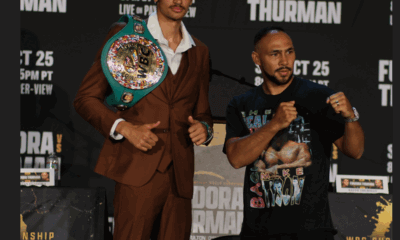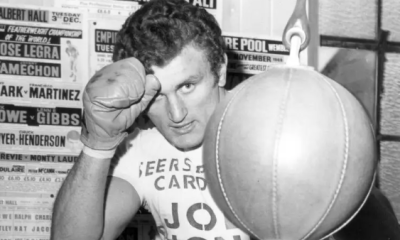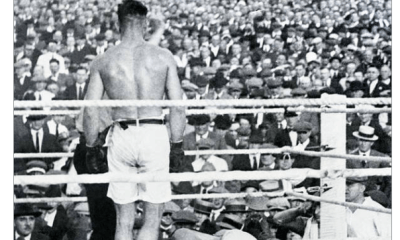Featured Articles
The Newsboy Boxer: Remnant of a Bygone Era
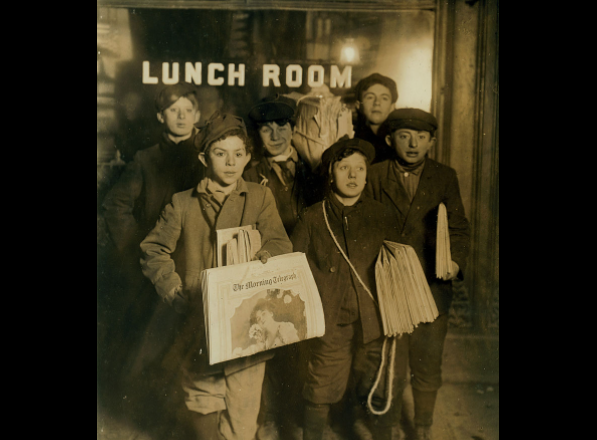
In olden days, many boxers were drawn from the ranks of newsboys. The newsboy boxer was a staple of so-called smokers during the early decades of the twentieth century. Some amateur tournaments were restricted to newsboys. The promoters had no trouble finding volunteers.
Some newsboys went on to have Hall of Fame careers. Abe Attell, Tony Canzoneri, Young Corbett III, Pete Herman, Rocky Kansas, Fidel LaBarba, David Montrose, Lew Tendler, and Kid Williams are enshrined in the International Boxing Hall of Fame in Canastota, NY. There are undoubtedly a few others in there with a newsboy background. Montrose was enshrined under his ring name, Newsboy Brown.
There are different types of newsboys. Many years ago, this reporter had a newspaper route. At the distribution center, copies of the Long Island Press were folded in such a way that they became projectiles which could then be launched on to a homeowner’s stoop without getting off one’s bicycle. The Press was an afternoon paper so there was no conflict with school.
This was the sissified version of a newsboy.
With few exceptions, the newsboys that went on to become boxers were city dwellers who had to hustle to make a little money in the face of fierce competition. They did not have the luxury of a well-defined route free of interlopers like the kids in suburbia. They had to fight to defend their turf.
A boy holding a bunch of newspapers under one arm as he barked out his spiel was once a ubiquitous shard of the urban landscape. The peak years were the years straddling the dawn of the twentieth century when new technologies sharply reduced the cost of producing a newspaper. During the decade of the 1890s, notes the celebrated historian Vincent DiGirolamo in his 2019 opus “Crying The News,” 657 new daily papers emerged in the United States, bringing the total to 2,179. In 1899, there were more than two dozen dailies in New York City alone with a combined circulation of more than a million. Many of the newcomers were tabloids that practiced so-called yellow journalism. They were known for their lurid headlines, a boon to the newsboys who had their hook for roping in passersby who might need a sensational storyline to trigger them into shaking loose a few coins.
During this period, the newsboy demographic changed. Jews and Italians displaced the Irish. Boxing mirrored the transition. Of the Hall of Famers previously mentioned, only Kid Williams, born in Denmark, was unique. Young Corbett III (Raffaele Giordano), Pete Herman (Peter Gulotta), and Rocky Kansas (Rocco Tozzo) were Italian. Montrose was Jewish, as were Attell and Tendler.
There were two diametrically opposed stereotypes of newsboys.
In books for young readers, he was often portrayed as an orphan who would return a lost wallet to its owner with its contents undisturbed. He was applauded for his industriousness. But as the ranks of newsboys were swelled by immigrants and children of immigrants from Southern and Eastern Europe, a pernicious stereotype emerged. Newsboys were now frequently portrayed as truants whose moral fiber, already tattered, was worsened by a life on the streets. Newsboys, it was noted, were more likely to smoke, swear, and gamble than were their non-newsboy peers. At Newsboy Alley in Chicago, one could reportedly find a craps game at any hour of the day.
For some boxers identified either as newsboys or former newsboys, hawking papers was likely an irregular and fleeting occupation. Some may not have been newsboys at all. Old-time sportswriters were notorious for playing loose with the facts. But for some, work as a newsboy continued while their boxing careers were in progress. And newsboys weren’t all boys. There were always adult men in the mix and a smattering of girls and women too. Their percentage increased during periods of economic instability.
Plug the word newsboy into BoxRec and more than 100 citations appear. Monk the Newsboy, a fighter from Providence, Rhode Island, born Harry Kronski, had the distinction of being the last man to defeat George Dixon, knocking the immortal “Little Chocolate” into retirement. Newsboy Millich, who did not confine his fisticuffing to the ring, was one of the great sporting characters in the history of Sacramento.
Millich had more than 100 pro fights, but the prize in this category belonged to Abraham “Abe the Newsboy” Hollandersky who claimed to have had more than a thousand, earning him a citation in the Guinness Book of Records and in Ripley’s Believe it or Not. Abe sold newspapers on the streets of New London, Connecticut before graduating to the life of a maritime newsboy-businessman. Through an arrangement with the Department of the Navy, he acquired a supply boat from which he peddled newspapers and magazines and various sundries such as shaving cream to servicemen aboard military ships. He had his most notable fights in Panama where the U.S. Navy established a large presence during the building of the famous canal.
Abe did so well at his trade that he was able to finance the publication of his memoir. Titled “The Life Story of Abe the Newsboy: Hero of a thousand Fights,” the book went to so many editions that it became almost as commonplace as Pete Rose’s autograph. It is a most curious tome as one would have inferred from this promotional blurb: “a story that has all the charm of conversation…unspoiled by any editorial blue-pencil.”
As author DiGiralamo notes, although young boys hawking papers flooded the sidewalks of cities both big and small, they were yet invisible to social reformers concerned with improving conditions of children working in factories and mills. Part of this owed to the fact that newsboys were independent contractors and there was a great deal of turnover in their ranks. However, some young newsboys were compelled to quit school because of circumstances at home and their lot wasn’t an easy one. Their bosses could raise the wholesale cost of papers on a whim or reduce the number of unsold papers they were willing to take back. Working in harsh weather was a challenge and there were predators on the streets – older boys that coveted their pitch and men with sordid propensities.
In this environment, it figured that many boys would take up the sport of boxing. And as history would show, many proved to be quite good at it.
Check out more boxing news on video at the Boxing Channel
To comment on this story in the Fight Forum CLICK HERE
-
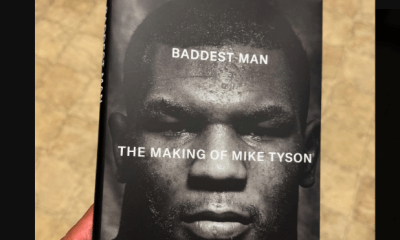
 Book Review4 weeks ago
Book Review4 weeks agoMark Kriegel’s New Book About Mike Tyson is a Must-Read
-
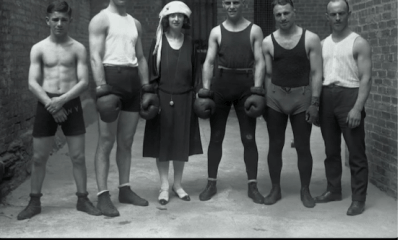
 Featured Articles2 weeks ago
Featured Articles2 weeks agoThe Hauser Report: Debunking Two Myths and Other Notes
-
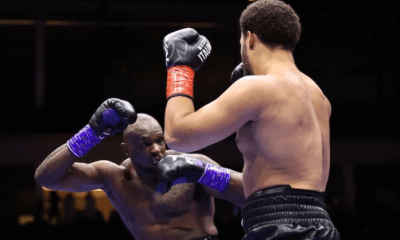
 Featured Articles3 weeks ago
Featured Articles3 weeks agoMoses Itauma Continues his Rapid Rise; Steamrolls Dillian Whyte in Riyadh
-
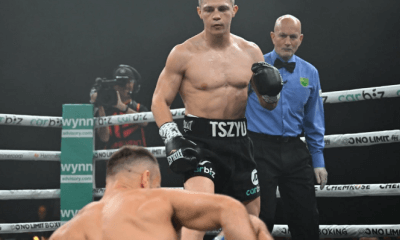
 Featured Articles3 weeks ago
Featured Articles3 weeks agoNikita Tszyu and Australia’s Short-Lived Boxing Renaissance
-
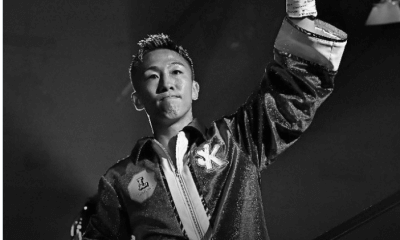
 Featured Articles4 weeks ago
Featured Articles4 weeks agoKotari and Urakawa – Two Fatalities on the Same Card in Japan: Boxing’s Darkest Day
-

 Featured Articles3 weeks ago
Featured Articles3 weeks agoIs Moses Itauma the Next Mike Tyson?
-
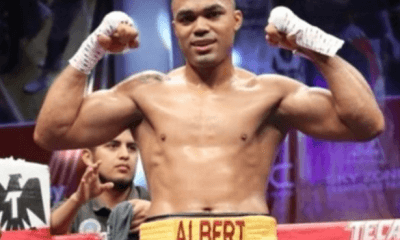
 Featured Articles4 weeks ago
Featured Articles4 weeks agoRamirez and Cuello Score KOs in Libya; Fonseca Upsets Oumiha
-

 Featured Articles2 weeks ago
Featured Articles2 weeks agoBoxing Odds and Ends: Paul vs ‘Tank,’ Big Trouble for Marselles Brown and More


